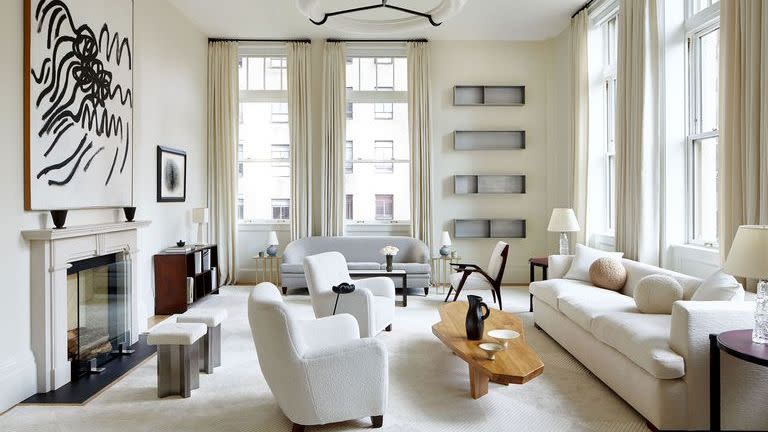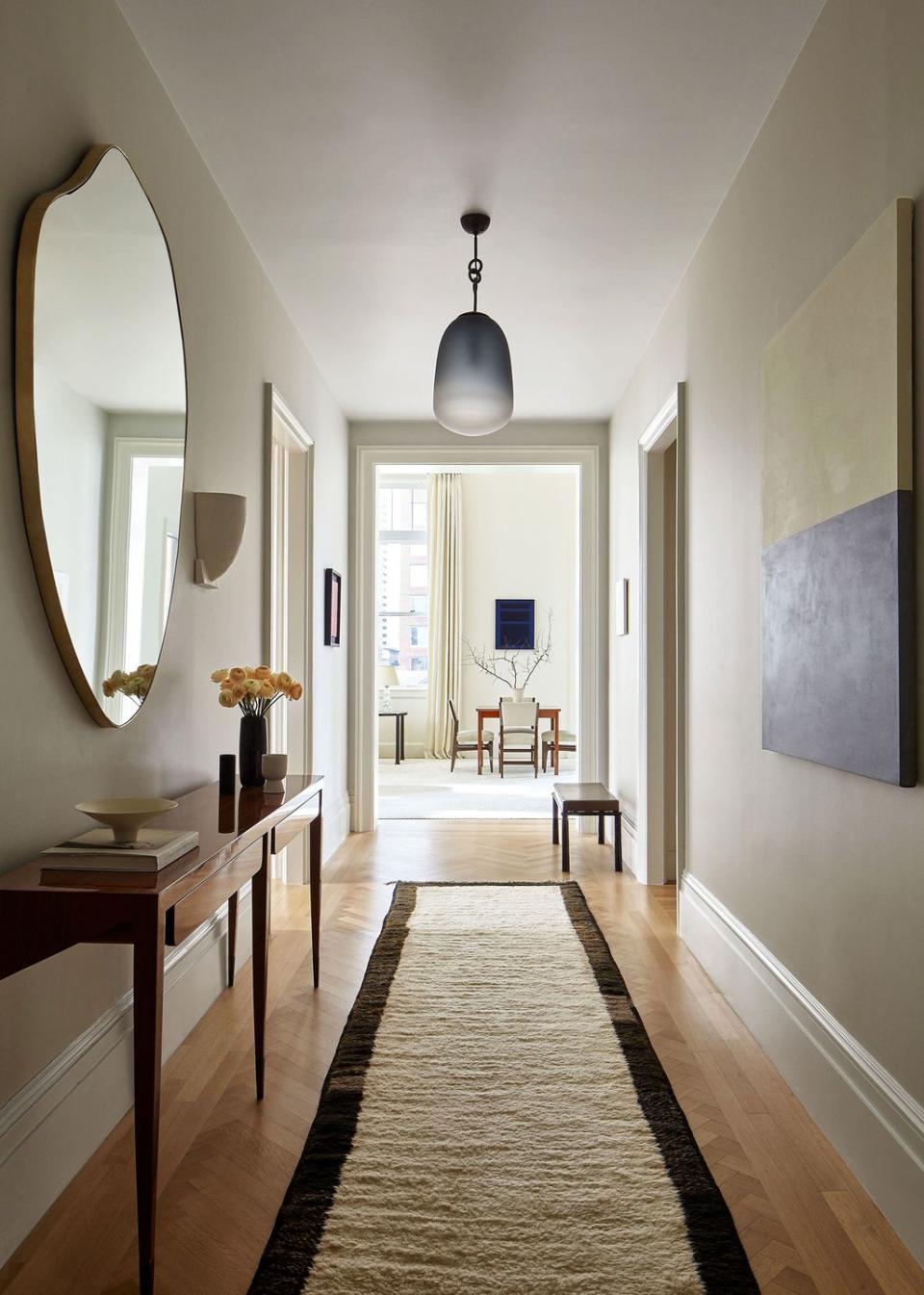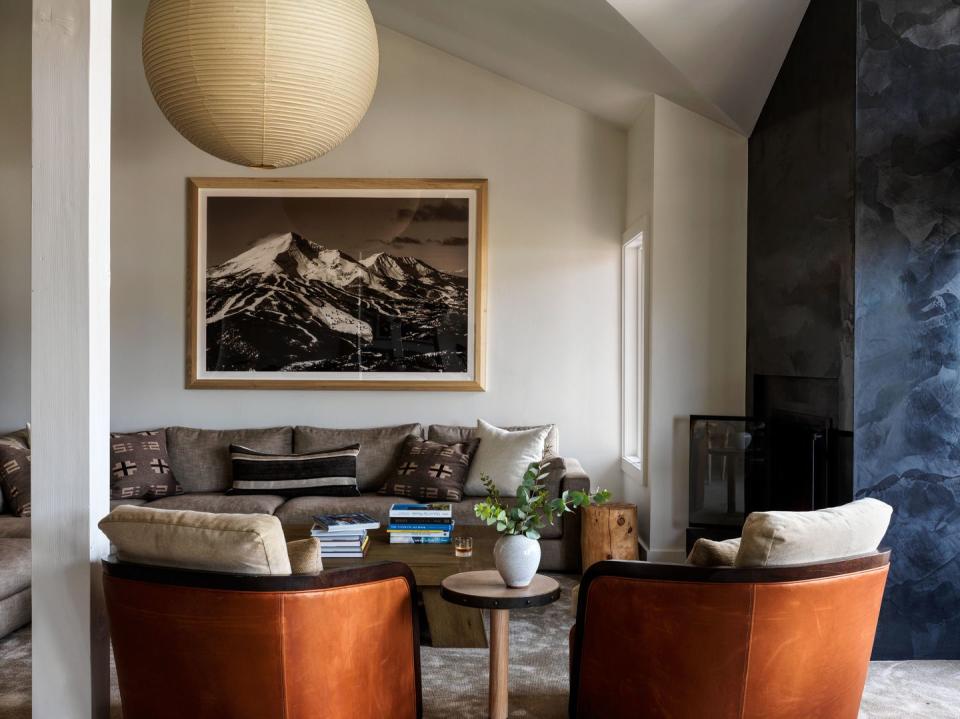Transitional Style 101: Everything You Need to Know

"Hearst Magazines and Yahoo may earn commission or revenue on some items through these links."
Torn between traditional and modern styles? Sometimes, you can have your cake and eat it too. Enter: transitional style, a rising decor trend that is a delightful combination of both. “Transitional design appeals to a broad base of design tastes as many people don’t want to feel boxed in by picking a rigid design lane and instead lean into the interest created when mixing design styles,” says Nashville-based interior designer Debbie Mathews. She claims that transitional design captures her philosophy that “every room needs at least one antique.” Welcome to a world in which your house can have an identity crisis, instead of you. But what is it, how did it come to be, and how can it live in your home? Let’s dive in and take a look.
What Is Transitional Design?
So what is it, exactly? Transitional design typically has its roots in a traditional aesthetic and then incorporates more contemporary pieces in a thoughtful way to keep the design ever-evolving, Matthews explains. “It is often referred to as ‘classic design with a modern take.’”
“It is the palate cleanser of all design styles,” Los Angeles–based designer Jenn Feldman says. “Whereas contemporary, midcentury modern, or Art Deco styles define a very specific moment in time, transitional interiors focus on defining space and place.”

What Are the Defining Characteristics of Transitional Design?
Transitional design attempts to balance luxury with comfort, masculine with feminine, and antiques with new pieces. What does that look like? Structured masculine chairs with a couch that has subtle curvatures; traditional artwork alongside modern lighting fixtures in a chic metallic finish; old architecture with modern colors and finishes. Basically, it’s a mishmash of decor elements, but a thoughtfully curated one.
Transitional spaces are often very quiet, a monochromatic composition of soothing, neutral hues—think taupes, tans, and creamy vanillas—paired with deeper browns and blacks for depth. While monochromatic, that gray-on-gray palette is made more interesting with texture and pattern. A nubby heather throw might be folded across a quiet-hued sectional, for instance. Or metallic artwork frames counterbalance the room’s beige-washed walls.
Defining Elements of Transitional Style
-Neutral color palette
-Open-concept floor plan
-Traditional architectural details
-Modern fixtures and hardware
-Minimal accessories
-Modern lighting
-Emphasis on comfort
-Plenty of texture and pattern
How Did Transitional Design Emerge as Its Own Genre?
The transitional design style first grew legs in the late 1960s after the midcentury modern period. Homeowners started blending more traditional elements alongside modernist architecture. They were combining clean lines, large glass panels, and open-concept floor plans with traditional features like brick and plush carpeting. Today, the transitional style continues to evolve as the modern farmhouse aesthetic took hold, as well as Crafts revival.
Mathews theorizes that the design style more recently picked up steam in the aftermath of the Covid-19 pandemic. “People began yearning for ties to the past (more simple times), given so much uncertainty in the world,” she explains. “Incorporating family heirlooms and treasures with more current pieces was a way to do this.”
In a world of intense political tension and health uncertainty, this design-style mash-up in its seemingly infinite number of happy accidents is the Switzerland of aesthetics—neutral territory for everyone to agree on. And people latched onto it fast.
Just ask TikTok creator Phoenix Grey, whose transitional style explainer has received nearly 100,000 views since he posted it in July 2022. “If you’re ever worried about following too many trends and your house ends up being tacky and you’re changing your designs all the time, listen up—this design trend is for you,” he begins.

How to Bring Transitional Design into Your Home
Nashville-based interior designer Debbie Mathews likes to begin by finding a common thread in a room. “I first build the foundation of a room with timeless pieces—the sofas, club chairs, and drapes are often the most expensive pieces that don’t have an early expiration date,” she explains. From there, she considers an antique chest or mirror to give the space character, richness, and history.
She then brings in classic fabrics with texture and pattern for drapery and upholstery to add interest and depth. Next, mix vintage and antique pieces with new. “I then like to layer in more contemporary artwork, lamps, and pillows with more up-to-date fabrics,” she adds. “Should these more contemporary pieces become outdated, it is easy to switch them out as they are in the room’s last layer of design and are typically less expensive.”
As for the color palette, Mathews uses a neutral color palette of whites, creams, browns, grays, and taupes. “You are providing a soothing backdrop for other design elements to take center stage and shine,” she says. “It is easy to add pops of color in the last layer with throws, colorful artwork, area rugs, accessories, and accent walls.”
What Are the Pros and Cons of Transitional Style?
One must not forget an additional perk of the transitional style. “Transitional design appeals to those who want to practice more sustainable living,” Mathews says. “By incorporating vintage and antique pieces, you are repurposing items that might have otherwise ended up in a landfill and giving them a second chance at life.”
One caveat about this design style is that, without proper layering, one can risk making their home look characterless. “The best way to visually describe it is like a hotel room,” remarks that TikTok creator, Phoenix Grey. “It’s a universally appealing design that caters to a wide demographic that’s very safe.” Of course, design enthusiast, we trust you’ll steer clear of this aesthetic crime. What’s a chic room without a few risky additions?
You Might Also Like

